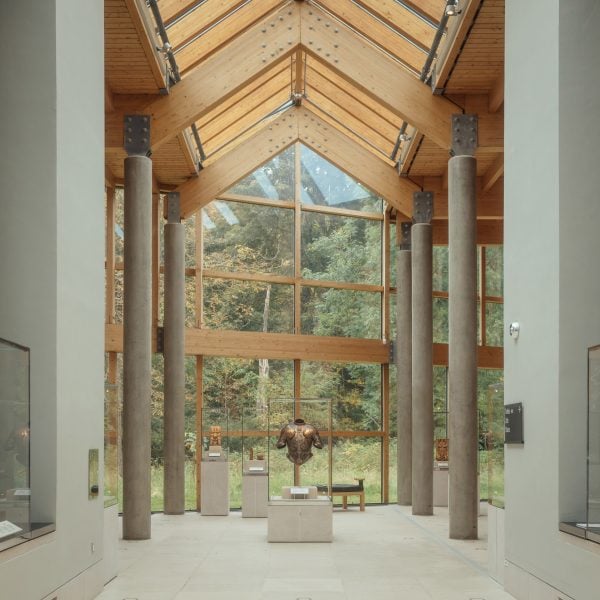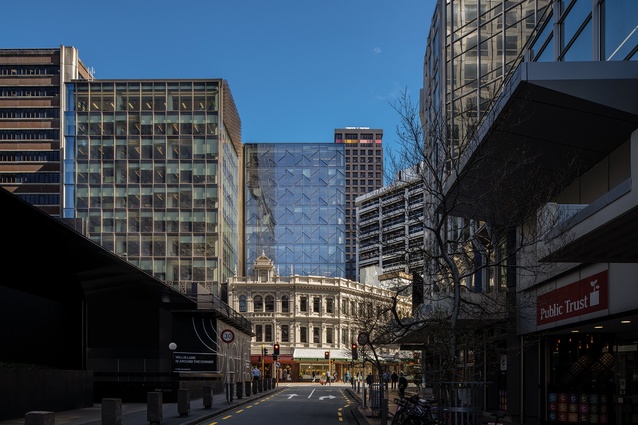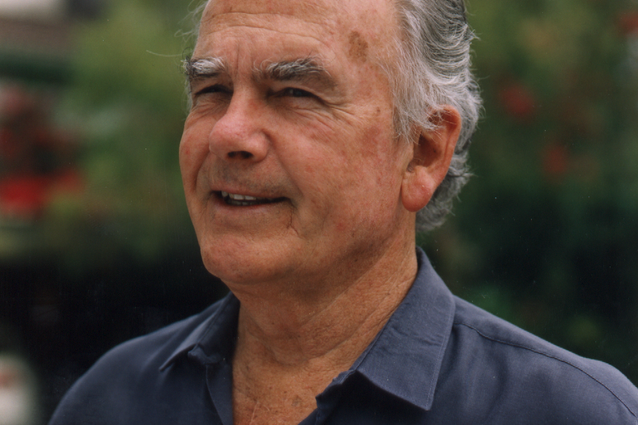Architects: Showcase your next project through Architizer and sign up for our inspirational newsletter.
When people find out that I work in the architecture industry, one of the first questions that they ask is something along the lines of: “Can you explain those ugly concrete buildings to me?” If we’re in a particular city — be it D.C., Toronto, or London – friends, family and acquaintances wonder why architects would choose to build what they perceive as eyesores. Whether seen as ugly, dystopian or fortress-like, the broader public finds it perplexing that architects and enthusiasts continue to defend Brutalism.
Long before the Instagram community brought about a renewed appreciation for the much-maligned concrete giants, I was sympathetic to the raw materiality of these hulking, greyscale buildings and lamented the destruction of Brutalist icons. This article does not aim to make a case for the style but instead explores how and why the tides have turned in the broader public perception of Brutalist buildings, as the recent change of fortunes for Marcel Breuer’s landmark building in New Haven demonstrates.
![]()
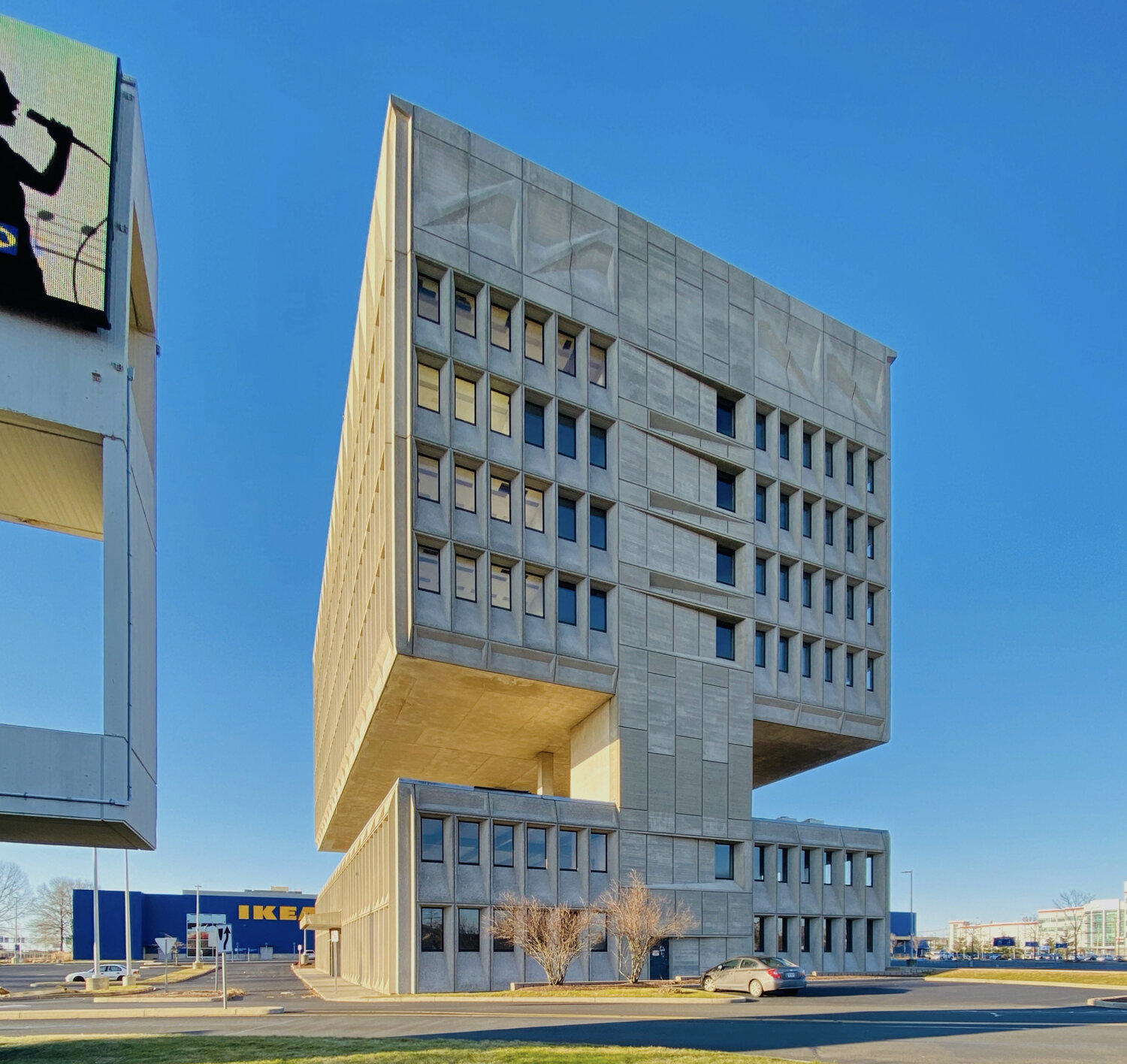
Marcel Breuer’s iconic Pirelli Building in New Haven, CT (1969) is being transformed into a net-zero energy Hotel Marcel local architect-developer Bruce Redman Becker. Images via Becker and Becker.
The monumental mid-century icon sits on the edge of the I-91/I-95 interchange, marking the entrance for travelers entering New Haven. Initially built for Armstrong Rubber Company, the structure became a research & development facility combined with offices soon after its completion in 1970. Nearly two decades later, the building switched hands in 1988, becoming an office complex for the Italian manufacturer, Pirelli — whose name remains attached to the structure. By 1999, the Pirelli company vacated the premises, leaving the building empty. It quickly entered into a state of decline.
This slow degradation sounded as a death knell until 2003 when Ikea purchased the land on which it sat, and the building joined the State Register of Historic Places. Even still, the Swedish furniture company wasted no time demolishing a part of the building to make a parking lot. After nearly two decades of vacillation, in 2020, they sold the landmark building to Becker + Becker Associates — an architecture and development company run by its namesake, Bruce Redman Becker.


Zvonařka Central Bus Terminal by CHYBIK + KRISTOF ARCHITECTS & URBAN DESIGNERS, Brno, Czechia. Photos by Alex Shoots Buildings
Few would have guessed that Breuer’s building would re-open as the country’s first passive house hotel even just two years earlier. That is to say, the restoration efforts not only revive a vital piece of New England heritage but also re-assert its relevance — fifty years after its construction — as a model for the future. The Marcel Hotel will operate free of fossil fuels and instead use solar panels and backup batteries to generate its electricity, heat, and hot water. Especially given the prominent discourse about concrete’s carbon cost today, who could have imagined that a landmark Brutalist building would become a landmark in sustainable design!
According to some preservationists, the central tenants of the mid-century Brutalist movement were, from the onset, antithetical to disciplinary precepts of architecture’s historical conservation. As some industry insiders have suggested, the industrialized underpinnings of Brutalist design, whose use of exposed concrete elided structure and the surface of the building, ran contrary to the values upheld by the Arts and Crafts movement, out of which modern historic preservation evolved. Breuer’s building, for instance, is modeled on the use of molded precast panels; the design stands as a testament to a significant moment in the architectural discussion about standardization, materials and monumentality.
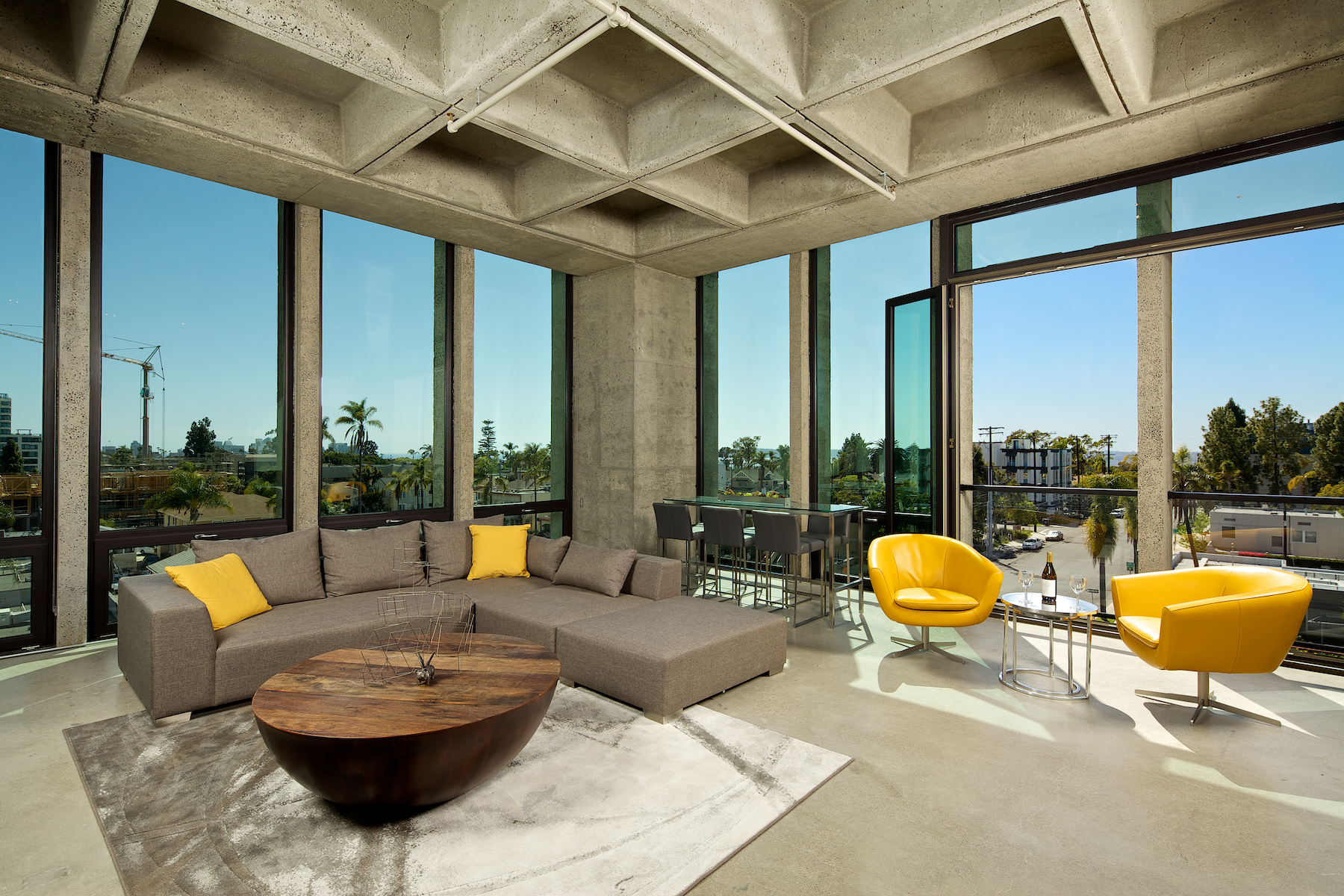
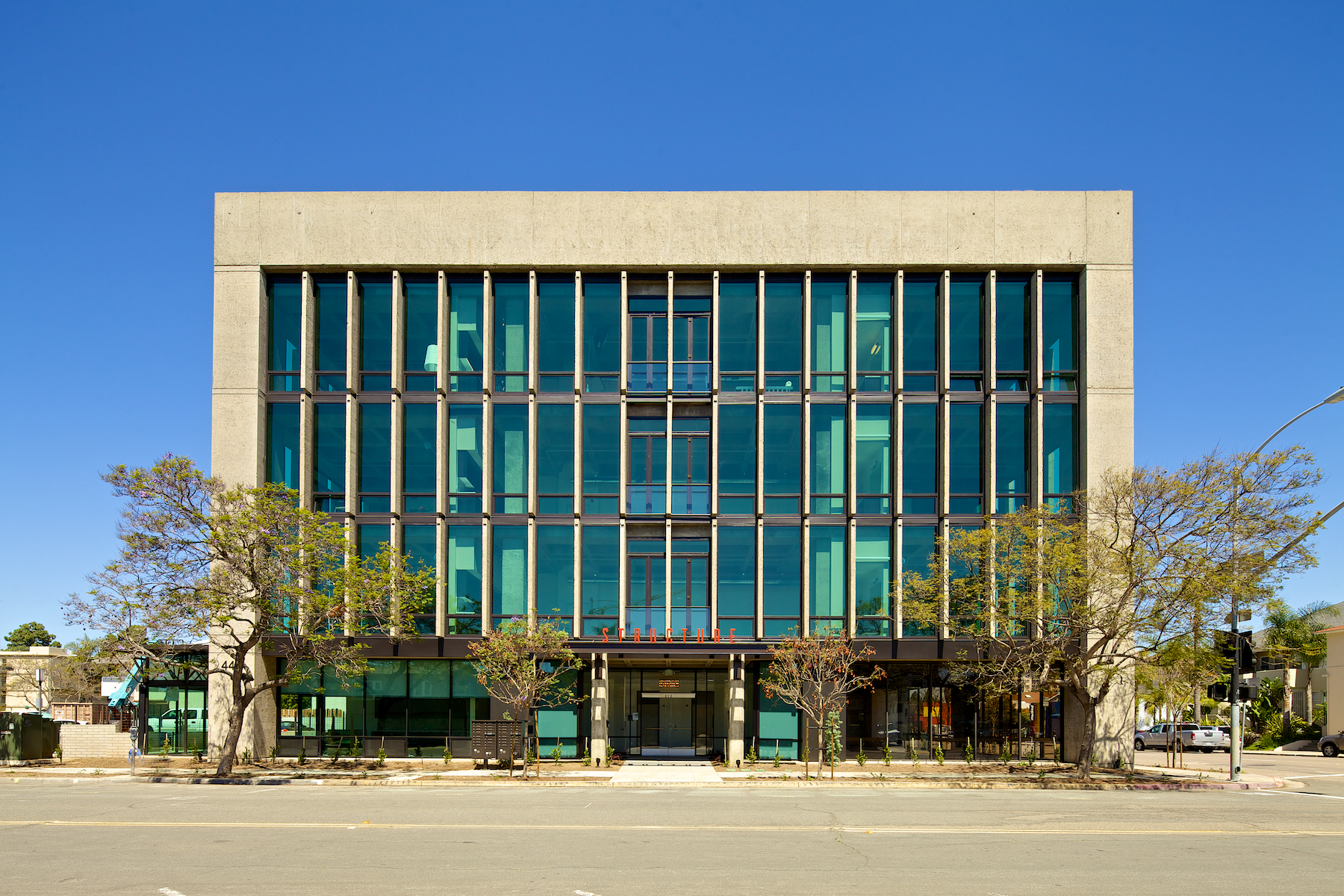
Structure Lofts by H2 | Hawkins + Hawkins Architects, San Diego, CA
Authenticity and design intent are usually central considerations for the preservation of a building. Under these criteria, preservationists run against the dilemma of restoring sometimes-shotty technologies in the name of architectural heritage that not only falls short of today’s energy efficiency and weathering standards but also poses the real risk of damaging the overall structure all over again. These quandaries also contributed to the reticence to restore mid-century concrete icons.
If, as some proponents claim, Brutalism’s fall from grace was due less to the perceived cold and abrasive aesthetic and more attributable to poor quality workmanship and languishing states of many buildings, then the renewed attention has pushed the traditional bounds of historic preservations. It is true that many mid-century buildings have not stood the test of time; however, is it fair that their poor performances should seal their collective fate? This gets to the heart of the core questions that drive the philosophy behind preservation and, perhaps, the need for different criteria when assessing and prescribing the value in protecting such structures and plans for their restoration.
Meanwhile, Breuer’s building was conceived of by the architect as the gateway to the city; the structure stood as a sculptural statement of the city’s rebirth. While embodying many of the typical features discussed within the Modern movement, it is also unique. It is significant not only due to the eminence of the architect Marcel Breuer, but, according to those in the architecture community, it also supposedly has social value to the history of New Haven. If citizens revile the structure, does this argument hold up?
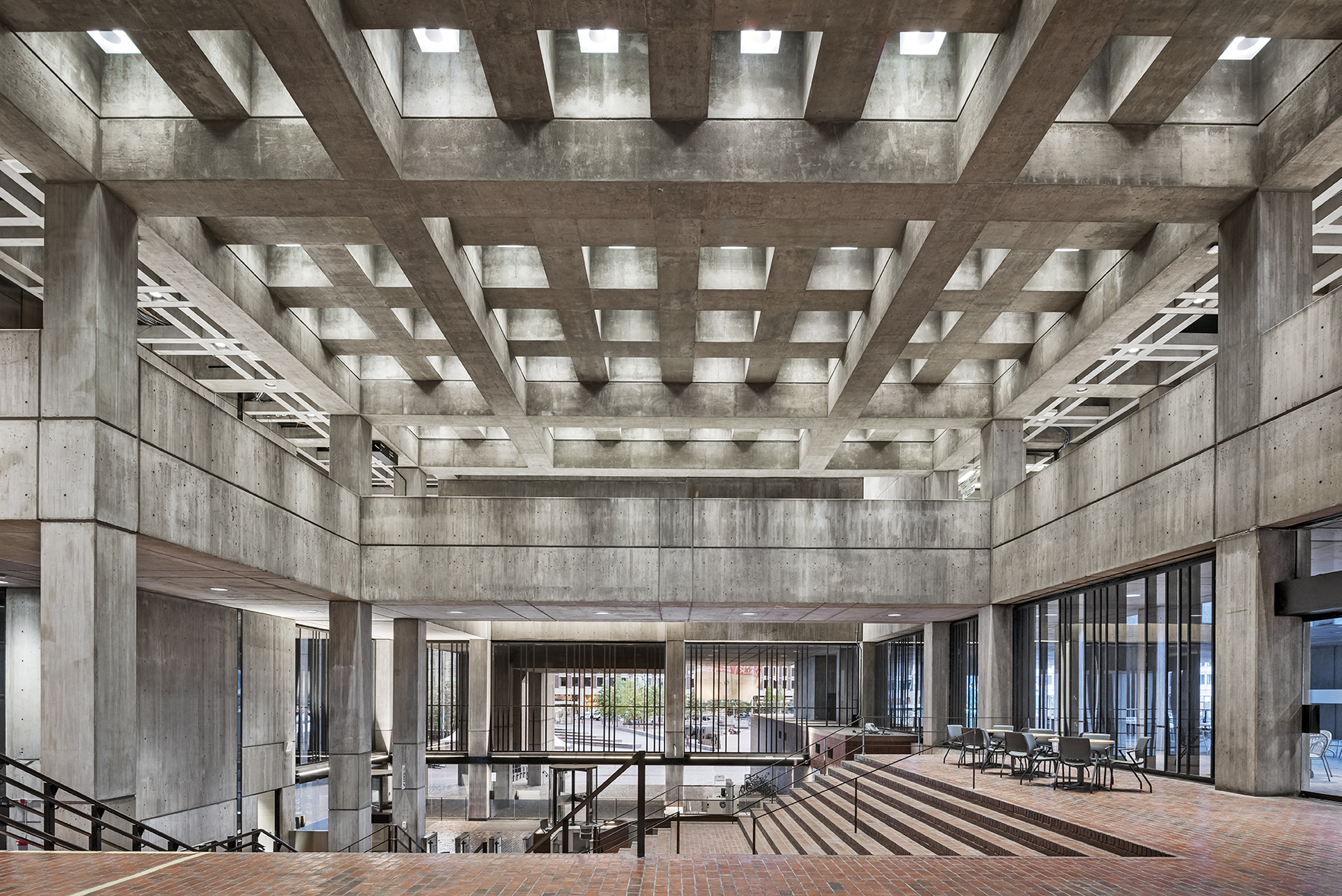
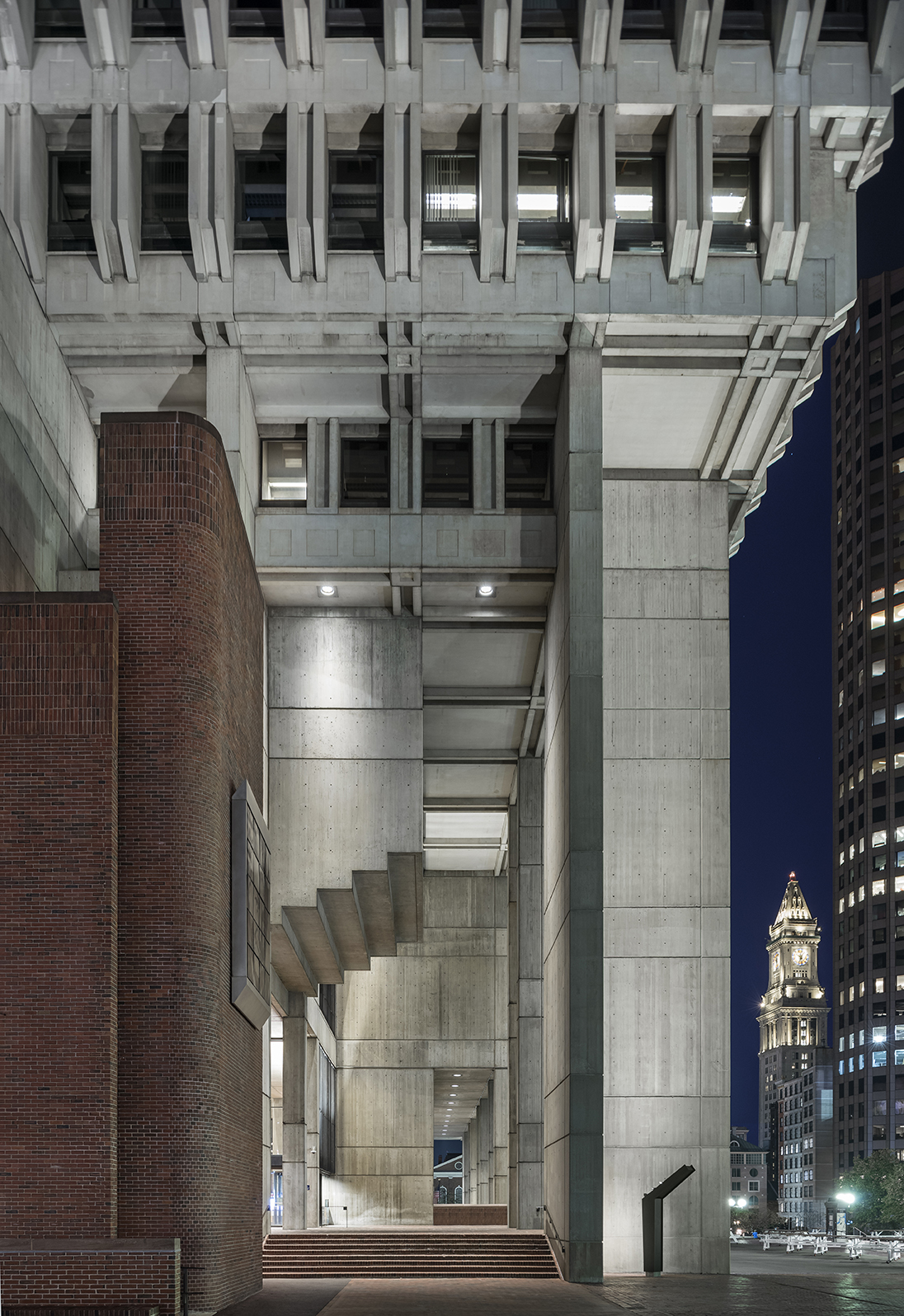
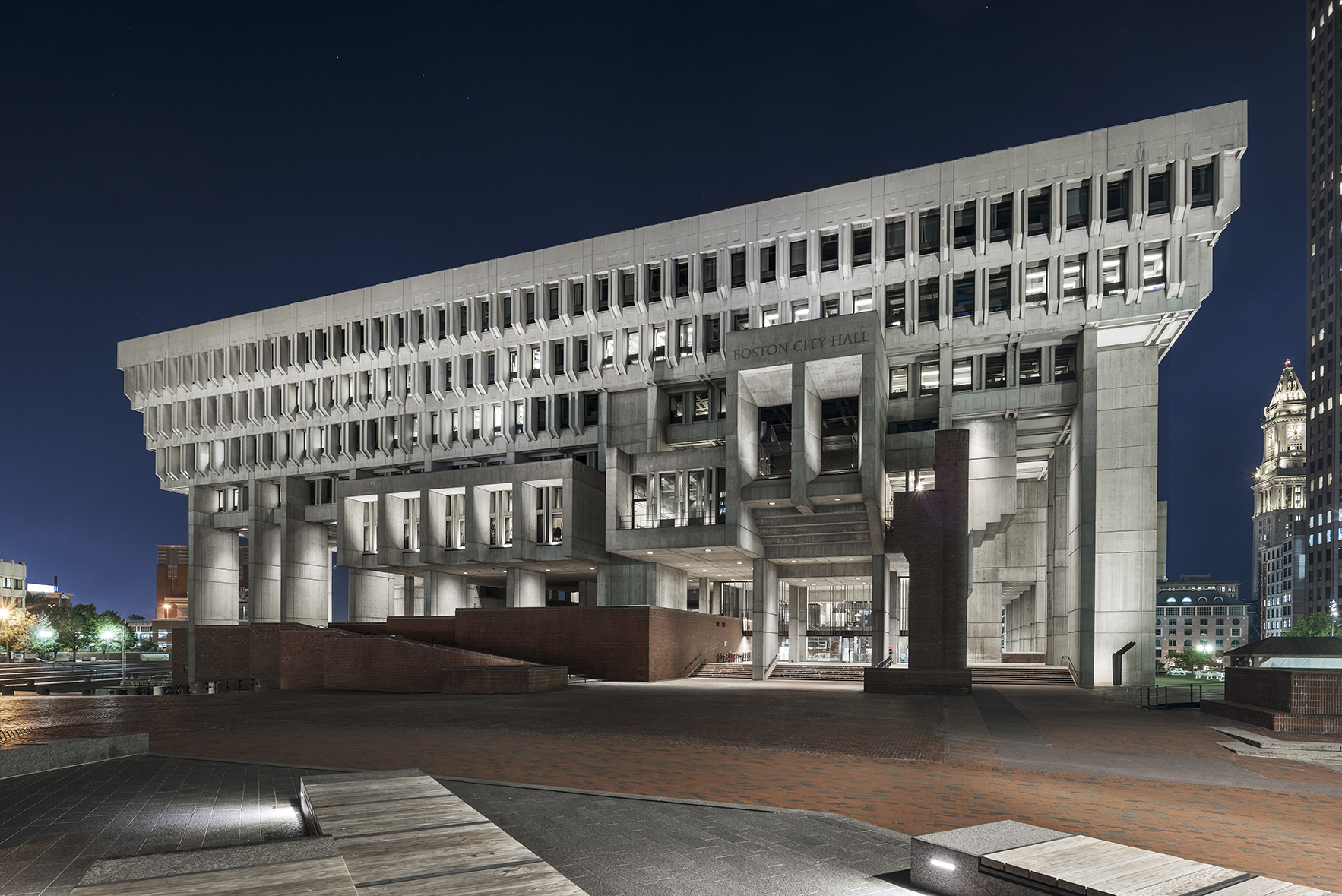
Boston City Hall Public Spaces Renovation by Utile, Boston, MA. Jury Winner, 2019 A+Awards, Plus-Architecture +Preservation. Photos by Anton Grassl
Preservationists tend to err on the side of authenticity, reinforced by standards set by original design intent. The discipline often replicates building parts and original materials that require replacement; yet, the preservation of modern architecture requires more flexibility and allows the structures to be improved for today’s sensibilities, rather than valuing absolute fidelity to their original iterations. The recent example of Boston City Hall’s redemption is telling in this regard where Utile Architects embarked on the threefold task to “drastically transform the building’s physical, ideological and emotional presence within the hearts and minds of the citizenry.” Achieving this goal involved the significant reworking of features and parts of the program.
Preservation, restoration and reconstruction tend to favor the original structure, either with maintenance and repair of the property as it has evolved or at a particular moment in its past. On the other hand, rehabilitation is more future-oriented; it recognizes the need to alter or add to historic structures for them to continue existing in the present. In the case of Brutalism, rehabilitation offers an exciting opportunity to reimagine the perceived shortcomings of these much-maligned monuments, giving them a second chance at life — not only aesthetically, physically and structurally, but also in the public imagination. Given what we know about concrete’s carbon cost and the importances of reusing existing structures rather than building new ones, this is also an exciting shift for the future of architecture.
Architects: Showcase your next project through Architizer and sign up for our inspirational newsletter.



